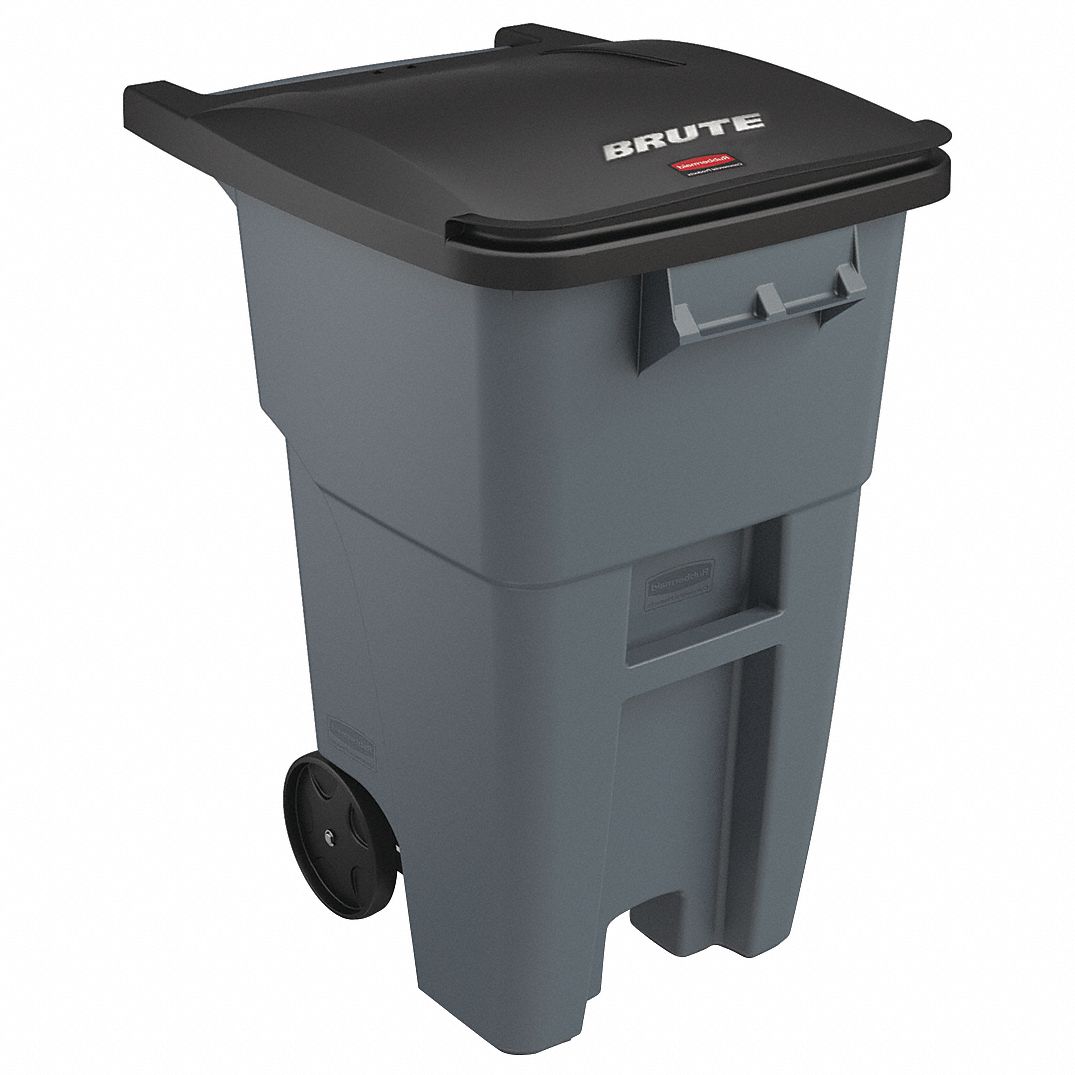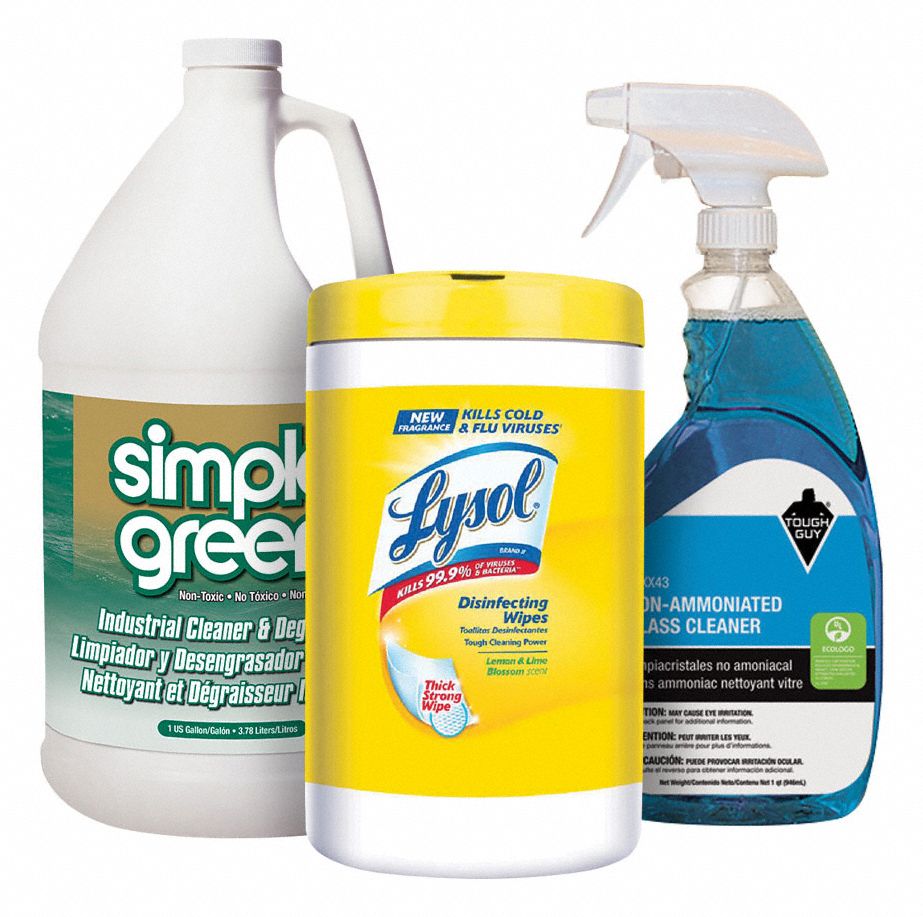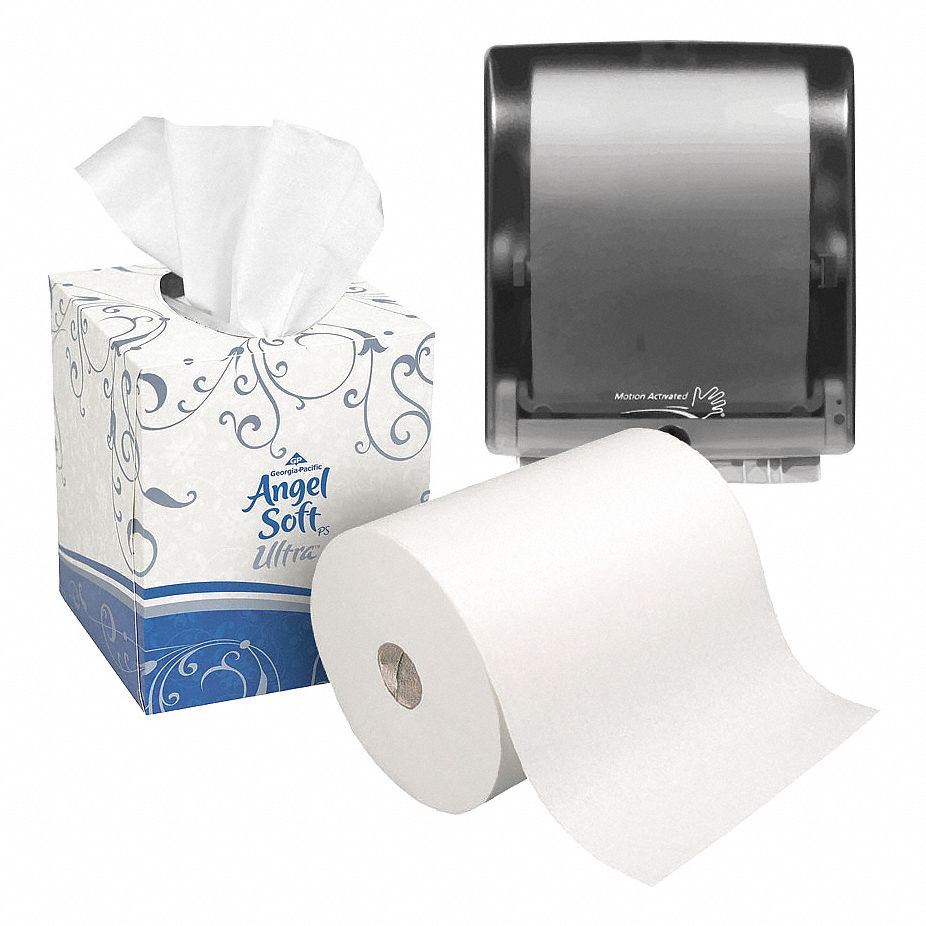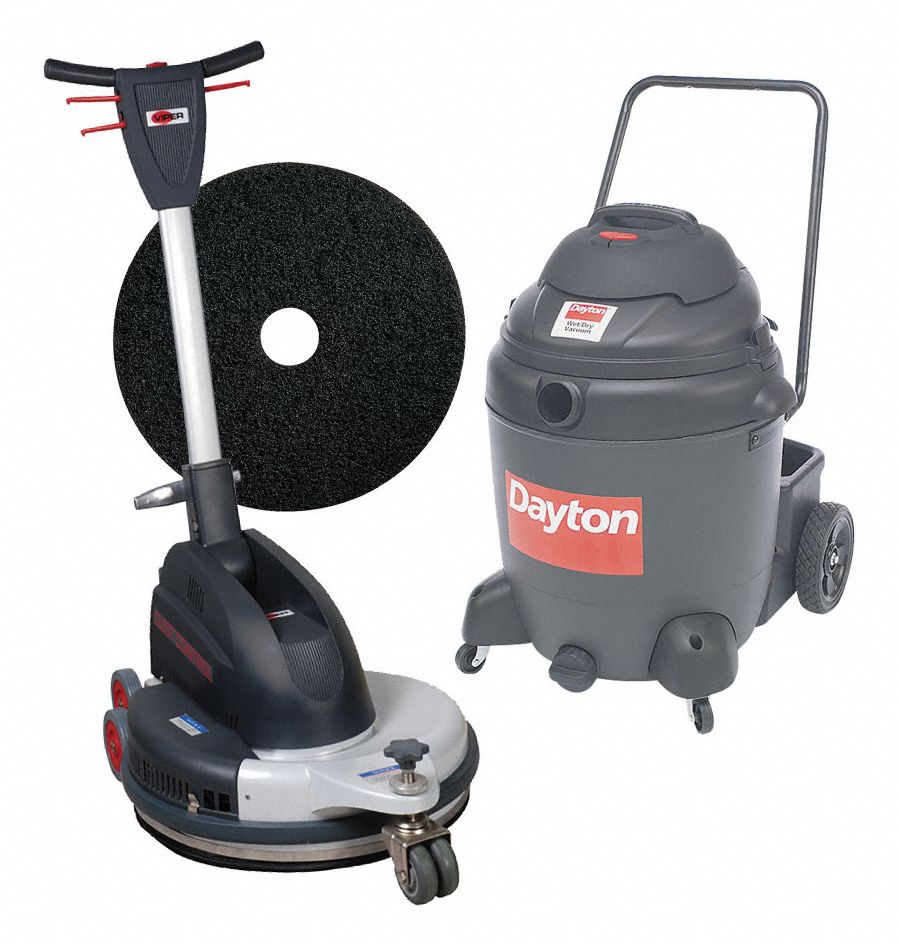

6 Commercial Bathroom Design Strategies to Raise the Bar
By Grainger Editorial Staff 8/22/22


Though bathrooms represent just a small fraction of a commercial building’s floor plan, they have an outsized influence on how people experience the space. Thoughtful design in this relatively small area can be the key to making a lasting impression on tenants and visitors alike. But the list of things to consider when designing or renovating a commercial restroom has never been longer.
It starts with the pandemic and how that changed people’s expectations for public and shared areas. It also includes long-term trends like the growing importance placed on sustainability and environmental stewardship, as well as the increasing recognition of the way that accessibility and privacy can help create inclusive spaces where all people feel comfortable and welcome.
It's a lot to think about. How can you cover all those bases? Consider these six strategies to channel your restroom design planning in the right direction.
Design for Cleanliness
Spotlessly clean bathrooms have always been a point of pride for many commercial building managers, and the pandemic has only enhanced their value. John Strom is vice president and general manager of Connected Solutions at commercial restroom supplier GP PRO. He said that the public's awareness of facility cleanliness and maintenance has become acute.
"Today, building visitors look for it," said Strom. "It sends the signal that the facility managers are doing everything they can to make the setting as safe and healthy as possible."
You might think that it just takes hard work to maintain a truly impressive level of cleanliness, but hard work may not be enough. In some cases, diligence can even be counterproductive. Strom noted that about 95 percent of dispenser checks are unnecessary, taking time that custodial staff could be spending on other work. But there are several ways that restroom design can help make cleaning easier—and more efficient.
Smart Cleaning and Restocking with Connected Tech
First, think of the most obvious signs of an inadequate cleaning program. Visitors who encounter overflowing trash cans, water on the floor, empty soap dispensers and other signs of neglect are unlikely to have confidence that bathroom surfaces have been fully scrubbed and disinfected to help prevent the transmission of bacteria and viruses.
To eliminate these visual cues, it’s important to plan for the right level of custodial attention, and it’s also important to know as soon as possible when problems emerge. Connected restroom technology can help with both challenges.
Connected sensors in restroom equipment can alert cleaning staff when product levels are low, preventing outages. These sensors can also supply usage data that reveals traffic patterns and takes the guesswork out of scheduling custodial staff.
This is especially helpful in office buildings where hybrid work schedules are leading to large fluctuations in building use throughout the work week.
"Everyone's still trying to figure out what the post-COVID work patterns are," said Strom. "Organizations are moving from schedule-based cleaning to event-based cleaning. By collecting and analyzing this kind of data, they can make informed decisions sooner."
Choosing the Right Materials
The choice of materials is another area where restroom design can make cleaning easier.
Nonporous materials are a plus— they provide fewer places for germs to hide. It’s also wise to choose materials that can withstand bleach or other harsh cleaning and disinfecting chemicals when necessary.
For flooring, consider large tiles that require fewer hard-to-clean grout joints, or tile alternatives like concrete.
Design for Contactless Operation
There's another consequence of the pandemic that seems like it’s here to stay: people are hyper-aware of how surfaces can transmit viruses. A public bathroom bristling with buttons, levers and cranks looks like an unnecessary health risk to many people.
Going Touchless
Touchless dispensers and fixtures are an obvious solution, allowing visitors to flush toilets, turn on faucets and dispense soap and paper towels with the wave of the hand. The technology was gaining ground before the pandemic, and has even greater application now.
What About the Door?
Using the full complement of touchless tech, visitors can emerge from the restroom with their freshly washed hands unsullied by contact with any surface—almost. What about that door?
During the pandemic, some facilities installed door hardware to allow hands-free opening, like foot-operated pull plates or door pulls that can be used without wrapping your hand around them. But hands-free door hardware has not become as ubiquitous as touchless sensors.
Instead, many hygiene-conscious visitors continue to use a low-tech solution, shielding their hands with paper towels when touching the restroom door handle. It may be wise to include a paper towel dispenser just inside the door and a trash receptacle immediately outside the restroom to accommodate visitors who choose to do this.
And in new construction, forward-thinking planners are looking for ways to streamline hygienic restroom exits by eliminating the doors entirely. Doorless entrances can use maze-like turns or S curves, which are already in use in many airport restrooms.
Design for Air Quality
Before the pandemic, most people thought of aerosols as just another name for spray cans. Now, we're all too aware of how mists of microscopic particles can spread illnesses.
Ventilation and air filtration came under increased scrutiny as many commercial buildings adjusted their operations to help prevent aerosol transmission of COVID-19. And a building's restrooms are one of the areas where air-quality shortcomings will be immediately obvious to building visitors. A restroom where unpleasant smells linger is unlikely to instill confidence in the facility's HVAC system or its cleaning regime.
What can you do? The most important thing is to make sure that the HVAC system meets or exceeds the ventilation rate recommended by the building engineering organization ASHRAE in its publications on indoor air quality, ANSI/ASHRAE 62.1 and 62.2. During the pandemic, ASHRAE also recommended that facility managers run restroom ventilation fans continuously and close bathroom windows.
Installing toilet lids is another step that can keep restroom air cleaner. Studies have found that an unlidded flush creates a toilet plume, an aerosol cloud that can contain infectious microorganisms. Considering that these aerosol plumes can remain airborne and travel with air currents, putting a lid on it seems worthwhile.
Design for Privacy and Accessibility
Accessibility has long been an important consideration for commercial bathroom designers. Under the Americans with Disabilities Act (ADA), most newly built or renovated bathrooms must meet certain requirements to help ensure that the facilities are accessible to people with disabilities.
And while basic accessibility as defined by the ADA is a great start, many organizations are taking it further by considering the needs of visitors who have an even wider range of needs. Adult-sized changing tables are an example—they're not mandated by the ADA, but there are still people who need them.
There's also a growing recognition that privacy is an important part of accessibility. The idea is to make sure that anyone who uses the restrooms can have dignity and security.
In many facilities, single-user ADA-compliant restrooms already offer privacy to some visitors. In multi-user restrooms, the provision of privacy can be increased by taller, European-style stall partitions and doors with indicators to show occupancy. Some facilities are also installing wash stations outside restrooms, moving handwashing into open areas for visibility and safety while simultaneously making the stalls more private.
Design for Sustainability
In recent years, environmental, social and governance (ESG) factors have become more important for corporate leaders and investors. Environmental sustainability is a key ESG consideration, and the push to develop organization-wide ESG strategies has not left facility managers behind.
Improving the efficiency and sustainability of restroom operations can have a real influence on a building’s overall environmental impact. One surprisingly effective conservation strategy is to switch to just-in-time consumable replacement enabled by restroom monitoring systems.
"When dispensers are refilled on a fixed schedule, there will be times when they're refilled prematurely," Strom said. "We've collected data showing waste reductions of up to 60 percent when custodial staff switches to just-in-time roll replacement using connected systems."
It doesn't stop there. Consider these measures for a greener restroom:
- Install waterless urinals and water-efficient toilets. A building’s toilets and urinals can account for nearly one-third of its water consumption.
- Install energy-efficient LED lighting. Lighting accounts for about 11 percent of all energy consumed by the commercial sector, and LED lights can be significantly more efficient than older technologies. Efficiency is especially important as some facilities are using brighter restroom lighting since the pandemic to allow visitors to more easily appreciate the level of cleanliness in the area.
- Use brown paper towels made with 100 percent recycled material instead of white virgin fiber towels. Recycled towels have a lower carbon footprint, and they’re a visual cue that demonstrates commitment to sustainability.
Design for the Future
To help make your facility investments valuable in the long term, it's important to look to the future, even as you weigh the demands of the present. Cutting-edge technology is emerging as a key point of differentiation that leading office buildings and luxury venues can offer to their tenants and guests. As you consider any restroom update, look for ways to support technical sophistication.
"Today, buildings that have technologically advanced systems have an advantage when it comes to attracting tenants," said Strom. "Organizations are seeing that opportunity and chasing it."
To help future-proof your systems, consider technologies that have application programming interface (API) capabilities, making it easier for them to communicate with other systems, now and in the future. This is especially important because there's a push toward integrating monitoring technologies into building-wide platforms that can offer staff a full readout in one place.
"The cost of the sensors and connectivity technology has decreased over the last several years, which makes the prospect of artificial-intelligence-driven, internet-connected systems much more accessible," said Strom. "Ultimately, it's going to find its way into everything that's worth measuring."
The information contained in this article is intended for general information purposes only and is based on information available as of the initial date of publication. No representation is made that the information or references are complete or remain current. This article is not a substitute for review of current applicable government regulations, industry standards, or other standards specific to your business and/or activities and should not be construed as legal advice or opinion. Readers with specific questions should refer to the applicable standards or consult with an attorney.











